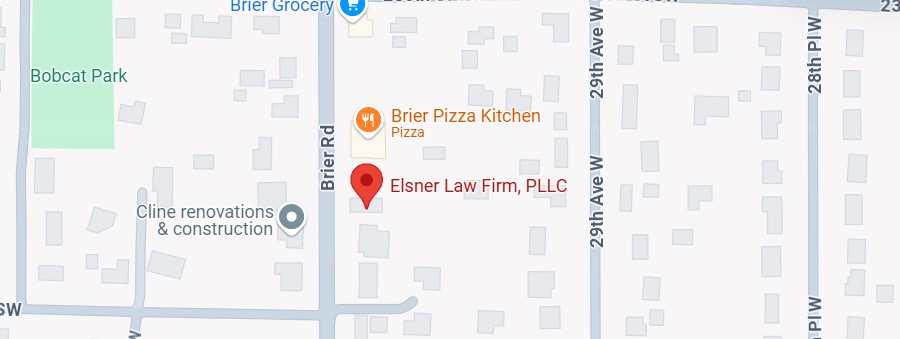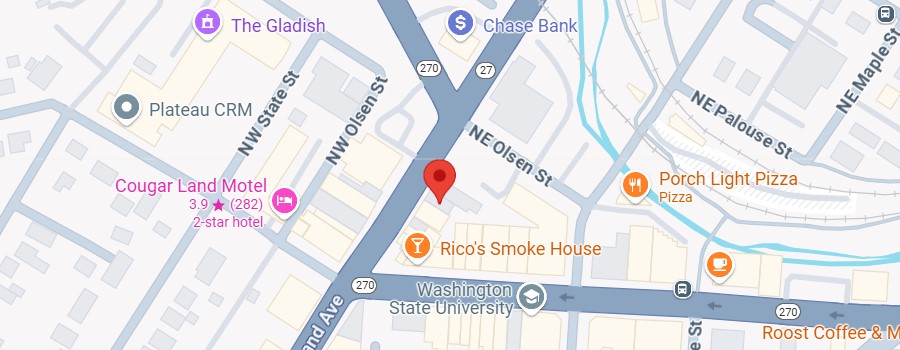Imagine this: The front ends of two cars collide while traveling at a high speed. This, my friends, is what we know as a head-on collision. Such an accident is unpredictable and can have devastating consequences, making it one of the worst types of car accidents out there, inflicting immense forces on its victims. Head-on collisions often occur at high speeds or in conditions of poor visibility, increasing the risk of severe injury.
We’re here to equip you with the knowledge you need to avoid such a terrifying situation.
The National Safety Council recommends “the four R’s” as your key to avoiding a head-on collision. Let’s dive in:
- Be aware of your surroundings: The first step in safeguarding yourself is to be mindful of your environment. Take a moment to read the road ahead. Look around your vehicle, checking in front and on all sides. Awareness of your surroundings and other cars is crucial. Keep an eye out for the next hill, curve, or overpass. Catch fellow drivers’ attention by turning on or flashing your headlights and honking your horn if needed.
- Drive to the right: On a two-lane road, the safest position you can be in is slightly to the right of the center of your lane. This placement brings you closer to the shoulder and creates an escape route in case of danger. If you spot an oncoming vehicle that’s drawing too close to the center line, start braking and drive slightly to the right of your lane. Remember, the closer the other vehicle gets, the further right you must go. In an emergency, you may need to quickly choose the safest direction to avoid a collision, so always be prepared to make a deliberate choice.
- Reduce your speed: Maintain a lower speed if you notice anything unusual or hazardous up ahead. Slowing down not only decreases the energy of your car but also enhances your control over the vehicle. It gives you the precious time needed to react to any sudden changes on the road.
- Ride off the road if necessary: Should you find an approaching vehicle, it’s essential not to make any sudden movements like jerking the wheel or slamming on your brakes. Skidding off the road can cause you to lose control, and we definitely don’t want that. Instead, steer yourself out of the impact path, even if it means driving off the road and onto the shoulder or the unfortunate encounter with a ditch or tree. It’s better to make this split-second decision to avoid a head-on collision. If evasive action is not taken, your vehicle could be struck in a head-on collision, leading to severe consequences.
And here are a few additional tips to keep in mind:
- Never straddle or hug the center line: By staying within your lanes and away from the center line, you make yourself a less likely target for a head-on collision. Safety should always be a top priority for you and your loved ones.
- Pay attention when passing: When passing another vehicle, pay close attention to ensure you have enough room to complete the maneuver safely. You don’t want to place yourself in a perilous position.
- Avoid driving to the left of oncoming vehicles: Going into the lane of approaching traffic is playing with fire. It’s best to stay in your proper lane and let the other driver correct themselves if they happen to veer off course.
- Swerving into the left lane? Don’t risk it: If you ever find yourself in a situation where you need to swerve to the left lane, think twice. It’s safer to drive off the road, making contact with the shoulder or even a ditch if necessary, rather than colliding head-on with another vehicle.
- Stay alert at all times: Staying alert and attentive while driving is crucial to avoid head-on collisions and reduce the risk of accidents.
Now, suppose you’ve experienced a head-on collision. In that case, we understand you’re not only facing a physically and financially draining recovery process but also the potential mental health effects, such as post-traumatic stress disorder (PTSD). Both the driver and passenger of the vehicles involved can be seriously affected. Our compassionate team at Elsner Law Firm, wants to assist you during this difficult time. We’re here to take the weight and stress of dealing with insurance companies off your already full plate, allowing you to remain focused on your recovery. Survivors of such crashes often face a long road to recovery, and we are committed to supporting you throughout this process.
Reach out to us at 206-447-1425 for a free consultation. Remember, you’re not alone—our dedicated team is here to support you every step of the way. We offer legal services specifically for head-on collision victims, and you can access these services without any upfront costs.
Introduction to Road Safety
Road safety is a responsibility that every motorist shares, as the choices we make behind the wheel can have a profound impact on our lives and the lives of others. One of the most dangerous types of accidents on the road is a head-on collision, where vehicles traveling in opposite directions crash front-to-front. These head-on crashes are especially deadly, often resulting in severe injuries or even fatalities for drivers, passengers, and other vehicles involved. According to the National Safety Council, head-on collisions accounted for nearly 30% of the 16,700 U.S. roadway deaths in 2019 involving crashes with other vehicles.
Understanding the risks and causes of head-on collisions is the first step toward avoiding them. By staying alert, minimizing distractions, and being prepared for the unexpected, motorists can significantly reduce the risk of being involved in a head-on crash. Taking proactive steps to prevent collisions not only protects your own safety but also helps safeguard the lives of everyone on the road. Let’s learn how to recognize the dangers and adopt strategies that can make a real difference in preventing these devastating accidents.
Understanding the Causes of Head-On Collisions
Head-on collisions often happen when a vehicle crosses the center line or median and strikes an approaching vehicle traveling in the opposite direction. Several factors can lead to these dangerous head-on crashes. Distracted driving—such as texting, talking on the phone, or adjusting the radio—takes your attention away from the road and increases the risk of drifting into the path of oncoming vehicles. Fatigue is another major contributor, as drowsy drivers may lose focus or even fall asleep at the wheel, causing their vehicle to veer across the center line.
Speeding also plays a significant role, as higher speeds reduce the time drivers have to react to hazards and make it harder to maintain control. Impaired driving, whether due to alcohol or drugs, greatly increases the risk of a head-on collision by affecting judgment, reaction time, and coordination. Poor weather conditions, like rain, snow, or ice, can make roads slippery and further raise the chances of a head-on crash.
Most drivers can avoid these risks by staying alert, avoiding distractions, and never driving under the influence of alcohol or drugs. By understanding what causes head-on collisions, you can make safer choices and help prevent these tragic accidents from occurring.
Preventing Head-On Crashes: Proactive Strategies
Preventing head-on crashes starts with adopting proactive strategies every time you get behind the wheel. One of the most effective ways to avoid a head-on collision is to always scan the road ahead for potential hazards, such as vehicles drifting toward the center line or unexpected obstacles. Reducing your speed when approaching curves, hills, or areas with limited visibility gives you more time to react if an oncoming vehicle suddenly appears in your lane.
Leaving extra space between your vehicle and others on the road is another key strategy. This extra space provides a buffer, allowing you to react and maneuver safely if a dangerous situation develops. Staying alert and avoiding distractions—like using your phone or eating while driving—ensures you’re ready to respond quickly to any threat.
Always check your surroundings, watch for oncoming vehicles, and be prepared to swerve or take evasive action if necessary. By being prepared and practicing these proactive habits, motorists can significantly reduce the risk of being involved in a head-on crash and keep themselves and others safe on the road.
Defensive Driving Maneuvers
Defensive driving maneuvers are essential tools for avoiding head-on collisions and staying safe on the road. One of the best techniques is to position your vehicle slightly to the right of the center of your lane. This creates extra space between you and oncoming vehicles, giving you a better escape route if another driver crosses the centerline. Always be aware of your surroundings, keeping an eye out for oncoming vehicles, pedestrians, and any potential hazards that could force you to react quickly.
If you ever find yourself facing a head-on collision, remember not to swerve into the left lane, as this can put you directly in the path of other vehicles. Instead, steer to the right, toward the shoulder, to avoid the oncoming vehicle. Practicing good control of your vehicle, using your brakes effectively, and avoiding target fixation (focusing too intently on one object) can help you maintain control and minimize the risk of a crash.
By learning and practicing these defensive driving maneuvers, drivers can reduce their chances of being involved in a head-on collision and help ensure a safer journey for everyone on the road.
Consequences of a Head-On Collision
The aftermath of a head-on collision can be life-changing, with consequences that extend far beyond the initial impact. These crashes often result in severe injuries for drivers and passengers, including traumatic brain injuries, spinal cord damage, broken bones, and internal injuries. The force of a head-on crash can be devastating, leaving victims facing long-term medical treatment, rehabilitation, and emotional trauma.
Beyond the physical injuries, the financial impact of a head-on collision can be overwhelming. Medical bills, lost wages, and vehicle repairs can add up quickly, placing a significant burden on those involved. That’s why it’s so important to take every possible step to avoid a head-on collision in the first place—by staying alert, minimizing distractions, and being prepared for sudden changes on the road.
If you are involved in a head-on crash, seek medical attention immediately, even if you don’t think you’re seriously injured. It’s also wise to consult with a legal professional to review your options for compensation and support. By understanding the serious consequences of head-on collisions and taking proactive steps to prevent them, you can help protect yourself, your passengers, and everyone else who shares the road.






